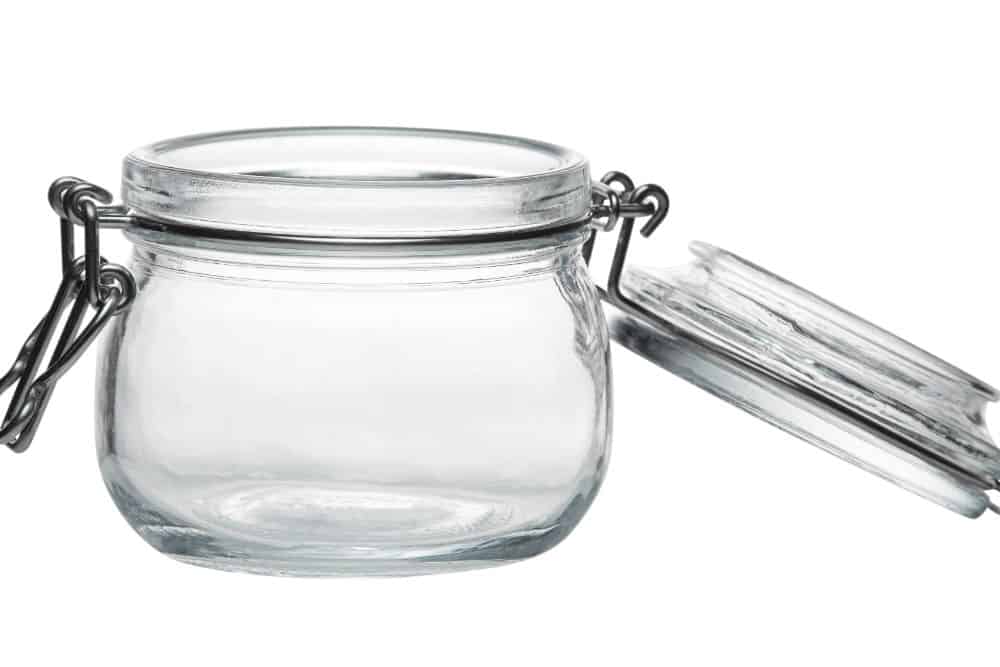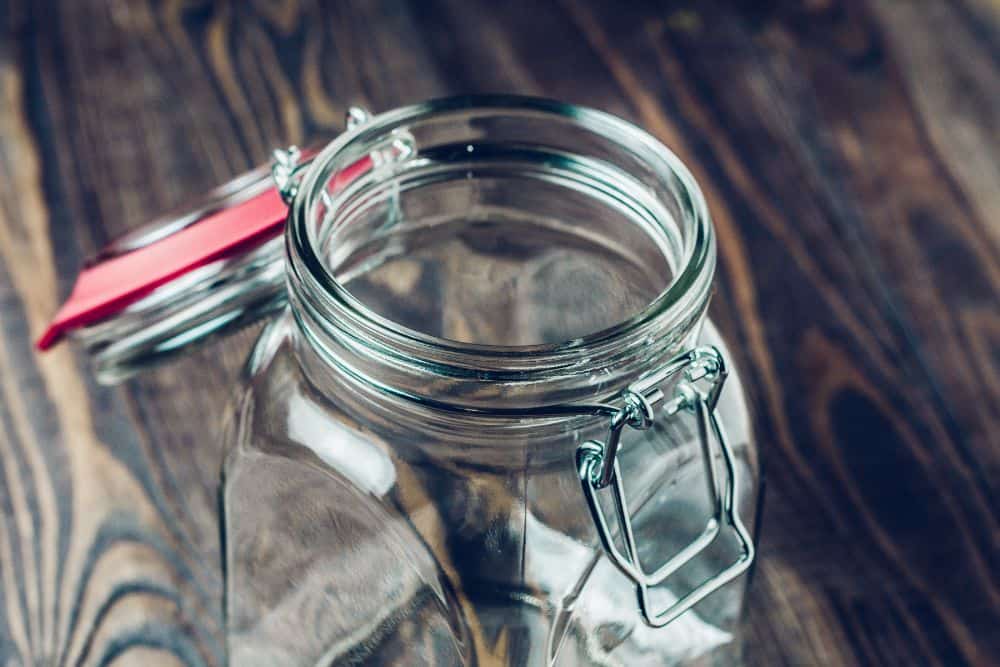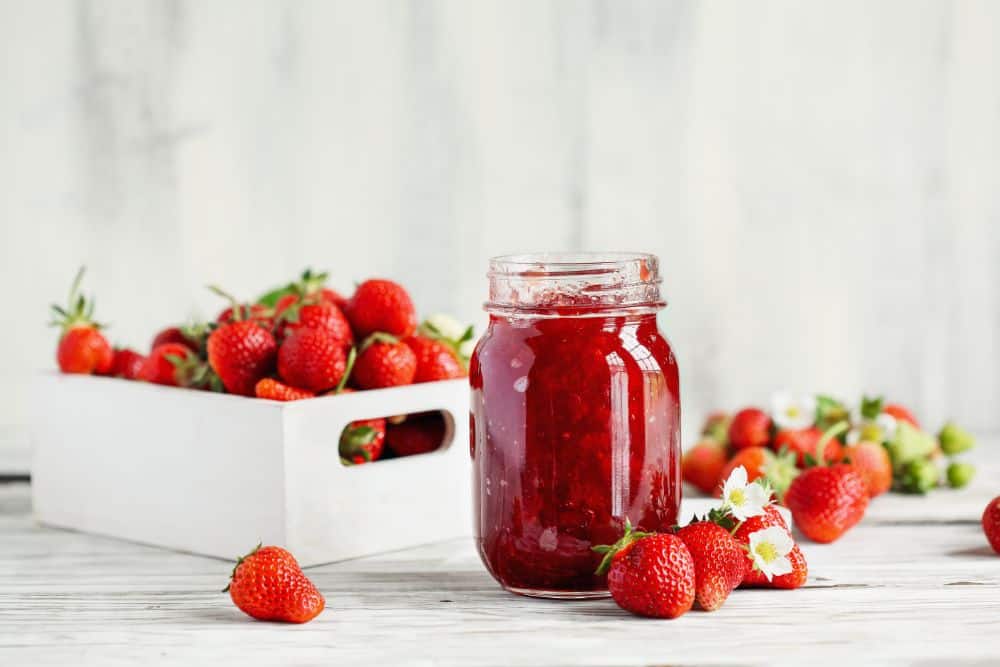Using glass jars and canisters is a resurging trend for many reasons. We want airtight food storage containers to seal our dry food like coffee beans, spices, flour, and even the cookie jar. But what is the best way to make a canister airtight? Should you use plastic or glass jars when sealing your food?
In this article, we will cover everything you need to know about how to make a canister airtight.
It's become fashionable to prepare our children's lunches in glass jars again. We're no longer ashamed of cracking the seal on a healthy salad we carted to work because it looks so delicious under glass.

But should you use plastic or glass for your food containers? Most people prefer mason jars, as they are the most popular brand for canning. Mason jars seal food and keep harmful bacteria from forming and spoiling the contents.
That is, if done correctly.
But what about the convenience of plastic containers? While plastic containers might be more convenient, they are less effective than glass. Not even a new pack of plastic containers is completely airtight when we snap the lid shut. Air and moisture can still enter and escape, which causes our food to spoil and become stale.
Let’s look at some specific examples of both glass and plastic containers below.
A common, traditional way to make a mason jar or can airtight is the water bath canning method. This method was probably used by your grandmother during the canning season.
With water bath canning, you seal whatever you want to preserve, whether dry food or coffee beans, in a mason jar or cookie jar. You then put the jars into a boiling water bath, where the head from the water will act as an airtight seal on the jars.
Using this method, grandmothers preserved every fruit in season or turned them into delicious, healthy marmalades, jellies, and preserves. Once the fruit was in the jar, people could later turn cucumbers into pickles.
While water bath canning remains common, there are other, easier methods when considering how to make an airtight seal.
Let’s look at the difference between glass mason jars and plastic ones. You can't dunk plastic containers in boiling water most of the time, but there are plenty of other ways you can use them to achieve an airtight seal.
Sugru is silicone rubber. It molds and sticks to many surfaces making it super versatile. It dries into a rubber product after 24 hours but is flexible for about 30 minutes. It's bendable and forms a desirable shape. It resembles Play-Doh in texture.

The downside to Sugru is that it's a bit expensive.
It's not toxic, but make sure you avoid direct contact with food. Using it on the lids of jars prevents food contact.
Remove the lids from the clean jars you plan on turning into airtight containers. Mason jars are excellent, but if they're old-fashioned, the tops will come in two pieces: ring and cap.
To make these airtight, you'll need to secure the lid to the ring in a separate step.
Open a packet of Sugru and roll it into a long noodle-like string. Press the string into the upper corner of the lid where the glass or jar lip will touch the cover.
Using your finger or small spoon-like tool, form the putty into place, smoothing out any uneven textures and air bubbles. Allow the putty to rest for approximately 30 minutes.
After the allotted time, fasten the lids to the correct jar but don't over-tighten. Since the Sugru putty is still pliable, it will create an imprint to match your jars' intricate locking curves.
Unscrew carefully and set the lids aside to air-dry for an additional 24 hours.
Fill your containers with your desired pantry products, and voila, you created airtight food storage containers.
The beauty of using glass is that it's hygienic, and easy to wash and sterilize. Glass also looks attractive and has the added benefit that anyone can instantly identify what's inside.
Small to medium glass jars are a great way to organize the pantry. Creative individuals can paint the lids or hand-label each jar. Consider treating the caps with a sealant to prevent corrosion and rust on frequently used contents like sugar, flour, or cookies. Make sure the sealant is food safe (even if you're only using it on the outside.)
It is a short-term solution to secure the neck of a bottle, canister, or jar and keep the contents from leaking. It's versatile and can even seal something with a wide mouth like a cookie storage container.
Bottle sealing tape shrinks around an opening and forms a tight encased surface. Using sealing tape on a larger opening, wind it around the lid. The adhesive seal fastens to many surfaces, including glass, plastic, resin, or ceramic.
Quality bottle sealing tape is tolerant to chemicals, is water safe, and varying temperature. The seal will prevent freezer burn if you need to store cookies or homemade pasta in the freezer.
Bottle sealing tape is food safe and often used to transport open but unused liquid portions. It works great with solid food and powers.
Plastic wrap might make your container airtight if you can get the tension right. Perhaps you but plastic cling wrap has kept our food and leftovers fresh for decades.
Plastic film will do as a one-time fix for anyone looking to make an airtight seal quickly. The good news about plastic cling wrap is that it's available and already in your kitchen.
Since food wrap has been on the market for eons, it's survived the rigors of food safety requirements. Plastic wrap won't contaminate your food with BPA, chemicals, and metals.
Most kitchens have Ziploc bags, or reusable plastic containers tucked away in a drawer or cupboard. There's a reason for that. They work. We store our lunches, snacks, and leftovers in them. We trust the brand to keep our food fresh in the deep freeze.
But are Ziploc bags and containers 100% airtight? No, and there is an explanation for that. There are a few kitchen hacks to try on to make them more so. But plastic is porous, meaning air and gas go in and out.
Ziploc uses LDPE low-density plastic to make its bags. While they're ideal freezing and storage solutions, water and gas can seep in over time, even in the deep freeze.
People rely on plastic baggies to keep their food supply safe. Since most of us consume what we buy within one to nine months (depending on the cut and type of meat), our food is safe.
There are a few hacks you can try to improve the airtightness factor (see the third paragraph) by trying this water immersion trick.
Canning is a labor-intensive process. Typically, food (cooked or uncooked) is sealed into cans or glass jars at a high temperature. This process forms an airtight lid and kills microorganisms and prevents food from spoiling.

During the canning process, heat expels air and creates a vacuum as the contents cool. Canning requires specialized canning tools and strict recipe guidelines.
Canning seals in the flavor of the food and makes it palatable for one to two years if kept at a cool temperature.
While a vacuum sealer won’t make a canister airtight, many consumers use vacuum sealing machines to preserve the freshness of their food.
As with everything, there is a food contamination risk. Vacuum sealing has a long list of cautions. Food safety is always paramount.
